�
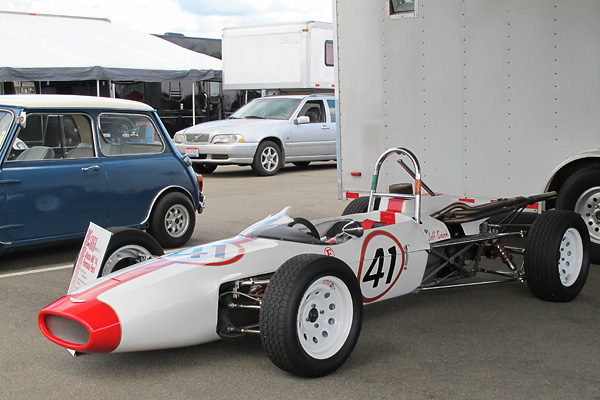
�
Jeff Snook's Alexis Mk14 Formula Ford Race Car, Number 41
� � Owner: Jeff Snook� City: Bowling Green, Ohio
� Model: Alexis Mk14 (1968)
� Engine: Ford Kent 1600cc
� Race Preparation: (see below) �
�
History of Alexis and the "Russell-Alexis" Formula Ford
��
In 1959 Alexis Cars Ltd. was founded in Birmingham by two partners, Englishman Alex Francis and�
Australian Bill Harris. Francis was a building contractor who enjoyed constructing and racing�
trials cars. Harris was more interested in road racing. Leveraging Harris' design and mechanical�
skills, the new partnership became a two car racing team which built and sold cars on the side.�
They focused initially on Formula Junior and moved on to Formula Three (F3) when�
Formula Junior declined. Before long, they were building Formula Two (F2) cars too. The�
partners scored some wins, but sales were slow. Harris left the firm in 1965, shortly after�
completing design of the Alexis Mk8 (F2/F3) model. Through the Bill Harris years, Alexis produced�
about a dozen cars for roadracing, plus about fifteen trials cars.�
�
Although Alex Francis remained Managing Director, a junior and part-time employee and hardcore�
racing enthusiast named Allen Taylor accepted a promotion and stepped up to the task of running�
the race team. He did more than that. Allen Taylor deserves credit for taking Alexis from�
obscurity to becoming a class-leading supplier of racing cars. Taylor accomplished this with�
a little help from former Grand Prix driver Jim Russell. �
�
The Jim Russell Racing Developments motor racing school was located at Britain's Snetterton�
race circuit. (A second Jim Russell school was located in California). Russell's school was�
locked in tight competition with the Motor Racing Stables school, at Brands Hatch. Russell�
was keenly aware that Motor Racing Stables was working with Lotus on a new model and a new�
class: the Lotus 51 for Formula Ford. Formula Fords would be similar to Formula Three cars,�
but with restrictions to keep purchase and operating costs much lower. Russell didn't just want�
Alexis to provide cost effective cars for his school, he also wanted to market "Russell-Alexis"�
Formula Fords to anyone who would race in this promising new class.�
�
Although Lotus was first to offer Formula Ford cars for sale, the Lotus 51 was just a re-powered�
and cost-reduced version of the Lotus 31 F3 car. Other early Formula Ford models (e.g. Merlyn's 11/11A)�
were also re-powered F3 cars. The Russell-Alexis Formula Ford was different. It was the first car�
designed specifically for the new Formula Ford racing class. In fact Alexis advertised that their�
new suspension was specifically designed for radial tires, whereas F2 and F3 cars raced on bias-ply�
racing slicks. In Britain, the Formula Fords of 1967 and 1968 used Firestone "F100" radial�
fully-treaded street-car tires. (In fairness, the Russell-Alexis did resemble to the Mk9 F3 car�
of 1966, but most dimensions were different and anyhow only one Alexis Mk9 was ever built.) �
�
�
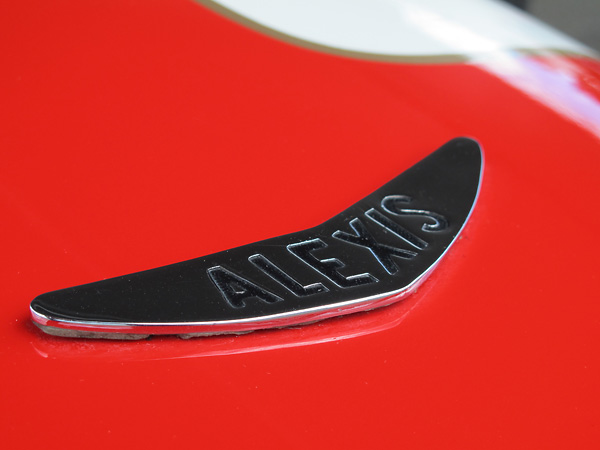
�
In 1959, Alexis Cars Ltd. was founded in Birmingham England.
�
�
The Russell-Alexis Formula Ford was first seen on track in Autumn 1967, and it was best in�
class for 1967. A 22-year-old architecture student from Belgium, Claude Bourgoignie, was selected�
from JRRD's recent graduates and given factory sponsorship. He drove the Russell-Alexis Formula Ford to�
eight race wins in 67, plus lap records at four circuits. Despite a late start to the season,�
Claude Bourgoignie won the Formula Ford Register's 1967 Driver of the Year award. Victories didn't�
stop there. For example: Australian driver Dave Walker won both the 1968 Duckhams Championship and the�
1968 Scottish Formula Ford Championship in his Russell-Alexis. Seventies Formula One star James Hunt�
was the most famous driver to start in a Russell-Alexis.¹�
�
Production of the Russell-Alexis Formula Ford continued through October 1968, when Russell and�
Alexis decided to part ways. The partnership had built and sold about 57 cars. Although Jim Russell�
wouldn't have called the Russell-Alexis an "Alexis Mk14" back in the day, that designation has been�
used since Alexis announced the Mk15 model for 1969. Alexis sales would never match the�
Mk14's build rate again. Allen Taylor bought Alexis Cars Ltd. from Alex Francis at the�
end of 1969. In March 1971 he moved Alexis from Birmingham to Coleshill, Warwickshire. �
The company continued building Formula Ford racecars through 1976. �
�
�
Enjoying this article? www.BritishRaceCar.com is partially funded through generous support from readers like you!
�
To contribute to our operating budget, please click here and follow the instructions.
�
(Suggested contribution is twenty bucks per year. Feel free to give more!)�
Factory Advertised Dimensions of the Alexis Mk14 Model
�| Overall length: | 137.5" | Front track: | 53.75" | |
| Overall height: | 31.5" | Rear track: | 55.125" | |
| Overall width: | 62.5" | Wheelbase: | 91.5" | |
| Body width: | 23.5" | Weight: | 884# (with oil and water) |
�
�
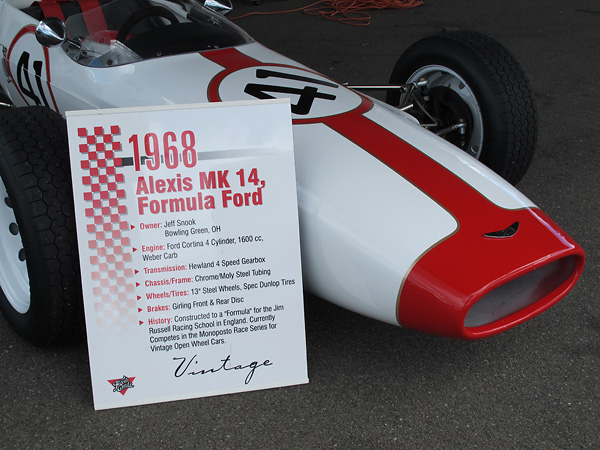
�
Jeff Snook's Alexis Formula Ford, chassis serial number AT51.
�
("AT" for Allen Taylor, followed by a sequentially assigned number...)
�
Jeff Snook's Alexis Formula Ford, chassis number AT51
��
Jeff Snook had plans to race his Triumph TR3 on eleven weekends in 1997, but they were scuttled�
at the first race when his TR3 rolled over. The Triumph was repairable, but the job would take time.�
Not wanting to miss a whole racing season, Jeff quickly started making new plans. Jeff decided�
he'd like to own and race an early Formula Ford.�
�
In terms of cars, very few racing classes compare with Formula Ford for value, competitiveness,�
and variety all at the same time. The "Class of 1968" alone included Lotus, Alexis, Merlyn, Dulon,�
and Crossle. Jeff particularly admired the Alexis Mk14 for its place in history as well as aesthetic�
considerations. (Its cigar-shaped nose is especially elegantly proportioned.) Before long, Jeff�
discovered and purchased the Alexis shown in this article: number 51. There was one little hitch.�
It was still in the process of restoration by Lead Motorsports of Ohio. While Jeff waited for�
Lead Motorsports to finish their work, he leased and drove a couple other Formula Fords.�
�
Original Formula Ford frames weren't constructed to last thirty years. In addition to wear and fatigue,�
corrosion is a particular concern because engine fluids were routed through frame tubes. Lead�
Motorsports crafted an entirely new frame out of chrome-moly steel tubing.�
�
Jeff took delivery of his new Alexis and completed a race weekend with it, but he soon began learning�
two things: perfecting a Formula Ford requires a fair amount of track testing and also the focused�
attention of a Formula Ford specialist. Jeff worked with Adkins Racing Services of Avon, Indiana and�
later with Lindstrand Motorsports of Darien, Wisconsin. When it was time to strip the Alexis down and�
restore it again in 2008, Jeff entrusted Bruce Lindstrand of Lindstrand Motorsports.�
�
As of November 2010, Jeff has driven his Alexis on 36 race weekends. He has enjoyed it at Grattan�
Raceway, Gingerman Raceway, Mid Ohio, Road America, Road Atlanta, Roebling Road, and Watkins Glen.�
We had the pleasure of photographing Jeff's Alexis at Watkins Glen's 2010 Historic Grand Prix. �
�
�
Please support the sponsoring companies who make www.BritishRaceCar.com possible, including:
�
 �
�
Features and Specifications
�| Engine: | �Ford Kent 1600cc with dry sump, rebuilt by Marcovicci-Wenz Engineering (MWE) in 2005.�
Motorcraft distributor.�
Taylor spark plug wires.�
Weber 32/36 DGAV carburetor.�
Pipercross foam air cleaner.�
Minister Racing oil pump.�
Wix 51516 oil filter.�
Jaz 1qt oil overflow tank. �
Electric engine oil pre-warmer. | �
| Cooling: | �original combined oil and water copper/brass radiator.�
(Oil cooler isn't in use.) | �
| Exhaust: | �Hytech Headers stainless steel tri-Y headers featuring patented anti-reversion chambers. | �
| Transaxle: | �Hewland Mk9 4-speed, with reverse.�
9/31 ring and pinion.�
Metalastic rubber "doughnuts" on the halfshafts. | �
| Front Susp.: | �unequal length wide-based wishbones.�
Carrera "Hyper-Charged" coilover shock absorbers.�
Eibach coil springs.�
Adjustable 9/16" anti-sway bar.�
Alford & Alder forged uprights (sourced from '62-'67 Triumph Spitfires).�
Highly modified Triumph Spitfire steering rack. | �
| Rear Susp.: | �inverted lower wishbones, single top links, and twin radius arms.�
Carrera "Hyper-Charged" coilover shock absorbers.�
Eibach coil springs.�
Proprietary Alexis magnesium uprights.�
Adjustable 9/16" anti-sway bar. | �
| Brakes: | �(master) dual Girling master cylinders with remote (AP Lockheed) reservoir and adjustable bias bar. � (front) Girling 14LF calipers. 9" iron rotors. � (rear) Girling 14LF calipers. 9" iron rotors. | �
| Wheels/Tires: | �Diamond Racing Wheels 13x5.5 steel disc wheels, in white powdercoat. (These are the 15# rolled-rim version.) � Dunlop Racing "Formula Ford" tires (135/545-13 CR82 front, 165/580-13 CR82 rear). | �
| Electrical: | �Tilton Super Starter, part# F23MS.�
Glass Mat Technology sealed racing battery (180cca).�
Joseph Pollak Co. master disconnect switch.�
(No charging system.) | �
| Instruments: | �(left to right)�
AutoMeter Phantom 2-5/8" mechanical coolant temperature gauge (120-240F),�
AutoMeter Phantom 3-3/8" tachometer (0-1000rpm), and�
AutoMeter Phantom 2-5/8" mechanical oil pressure gauge (0-100psi). | �
| Fuel System: | �custom Fuel Safe 3.5 gallon fuel cell, mounted behind seat.�
Mechanical fuel pump with push-on connections. | �
| Safety Eqmt: | �custom molded driver's seat.�
Simpson 6-point cam-lok safety harness.�
Alpha 10" flat-bottom suede-covered steering wheel, mounted on a quick release hub.�
FlameCrusher Halon 1211 5.5# centralized fire suppression system. | �
| Weight: | �~850 pounds.² | �
| Racing Class: | �Formula Ford | �
Engine Installation
��
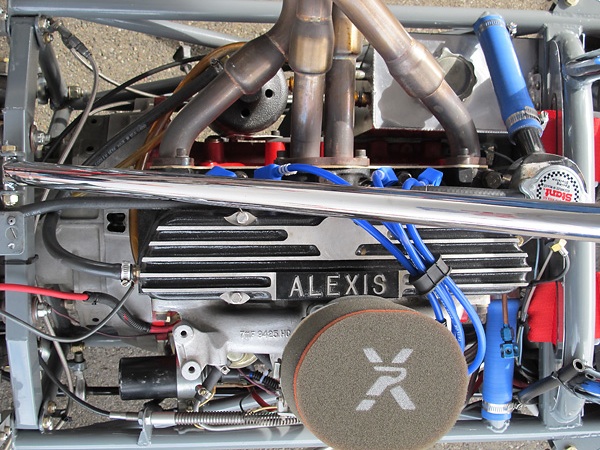
�
Ford of England's "Kent" 1600cc engine provides very good performance at a modest cost. An excellent
�
bore-to-stroke ratio and a well-flowing crossflow cylinder head are key advantages of the design.
�
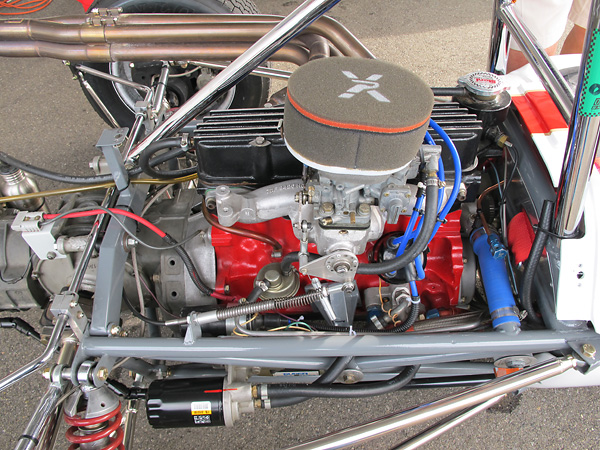
�
Formula Ford rules tightly restrict alterations of engine internals. Furthermore, in the early days of
�
British Formula Ford racing, competitors were empowered to purchase any rival's engine at the end
�
of a race for £150. (We don't have any information on how often this right was exercised.)
�
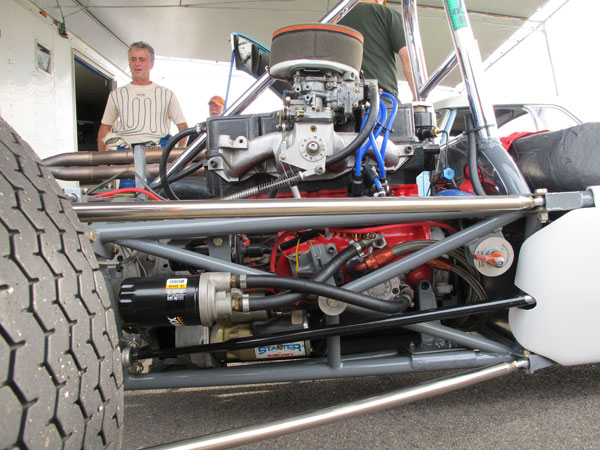
�
More extensive mods are allowed to the engine lubrication system. All competitive Formula Ford
�
racecars have dry sump lubrication systems to facilitate mounting the engine very low in the car
�
while providing more consistant and reliable oilflow to critical components.
�
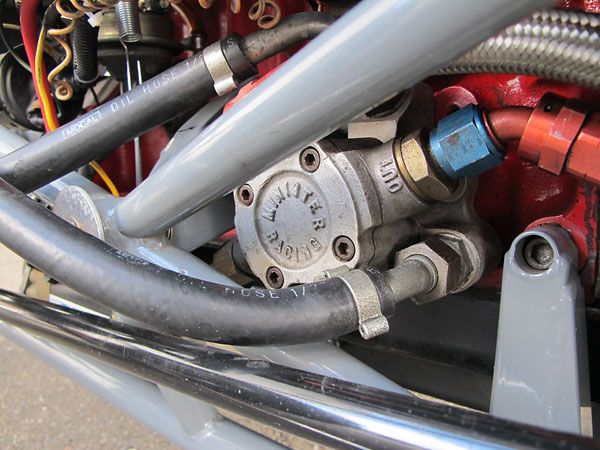
�
Minister Racing oil pump. (Dozens of companies have put their names on Formula Ford oil pumps.)
�
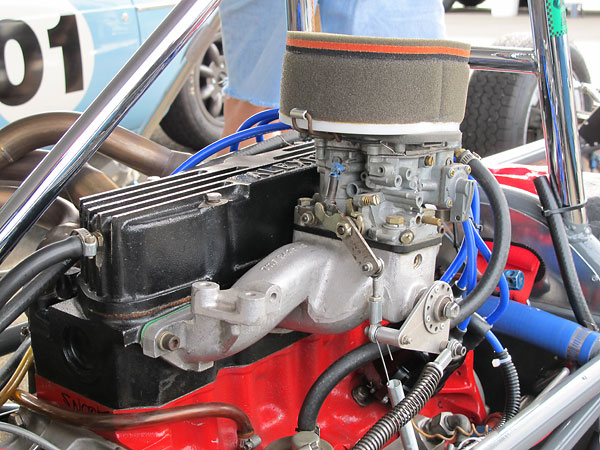
�
Weber 32/36 DGAV carburetor. Pipercross foam air cleaner.
�
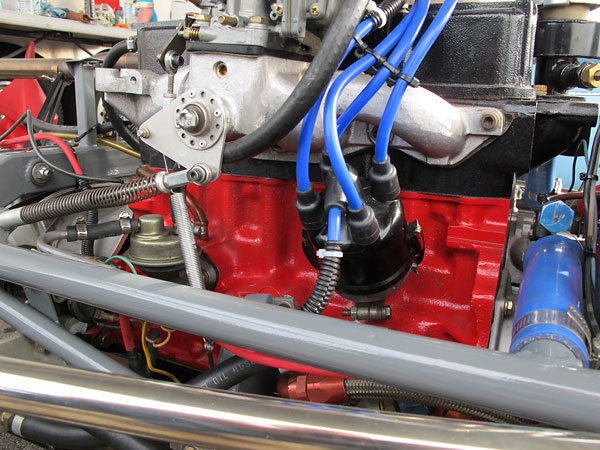
�
This is a Motorcraft distributor, but Lucas and Bosch alternatives are readily available too.
�
All are permitted. There's evidently no consensus on which distributor performs best.
�
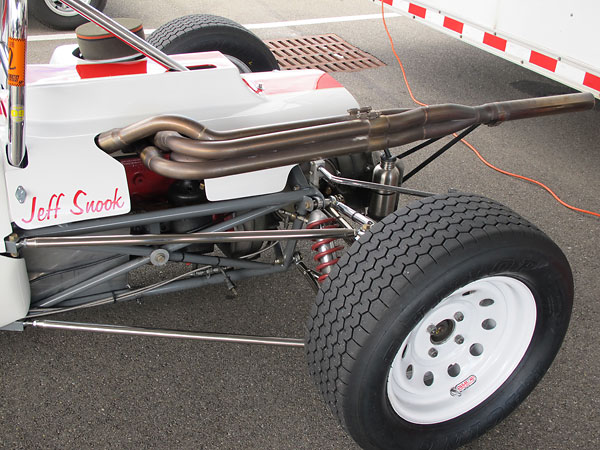
�
Following Ford tradition, and uniquely different from its competitors, the Kent engine's firing order
�
is 1-2-4-3. You might not guess that from these unorthodoxly arranged tri-Y exhaust headers: their
�
tubes were arranged for "sequential cylinder pairing". Tri-Y headers are used to isolate pulses
�
of gas pressure between cylinders while maintaining the speed of gases through the system.
�
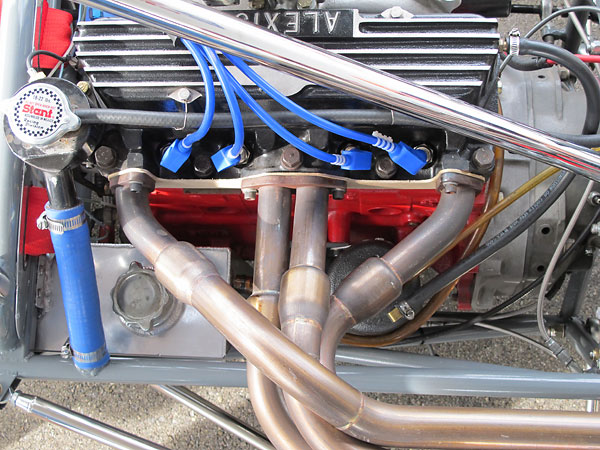
�
Another avant-garde feature of these HyTech Headers is their use of anti-reversion chambers in
�
combination with stepped-up primary tube diameters. The intent here is to keep exhaust gas from
�
flowing back into the cylinders where it would contaminate the fresh intake charge.
�
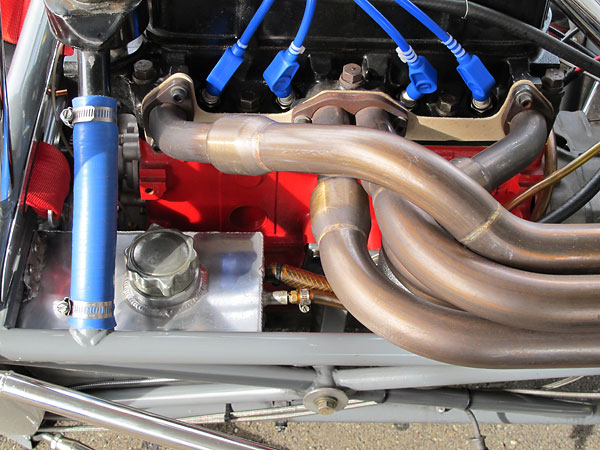
�
Early Formula Fords used sand-bent and oxy-acetylene welded mild steel headers.
�
These modern headers by HyTech are mandrel bent out of stainless steel tubing.
�
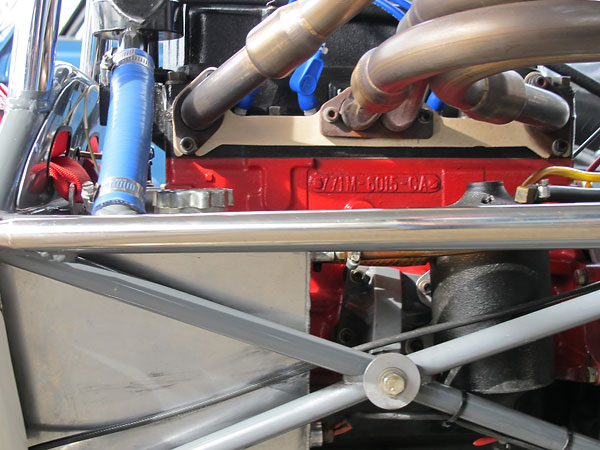
�
Custom fabricated aluminum engine oil reservoir. Jaz plastic overflow bottle.
�
Note the engine casting number - 771M-6016-CA - indicates a Ford Fiesta ('76-'83)
�
engine block has been substituted for the original Ford Cortina engine block. The Fiesta
�
version weighs about 4 pounds more, but is more substantial around the bearings.
�
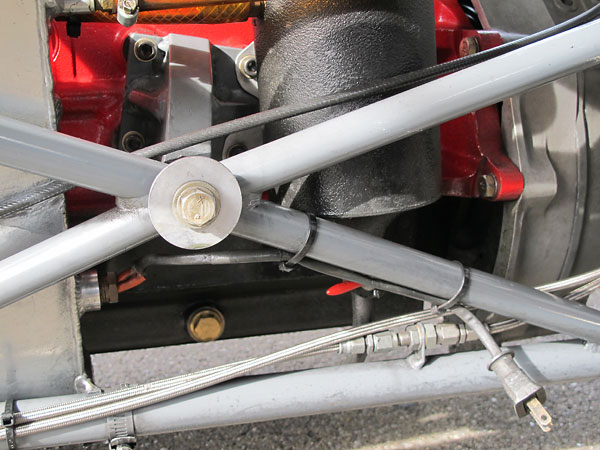
�
An electric oil heater is a smart feature for people who occasionally race in cold weather.
�
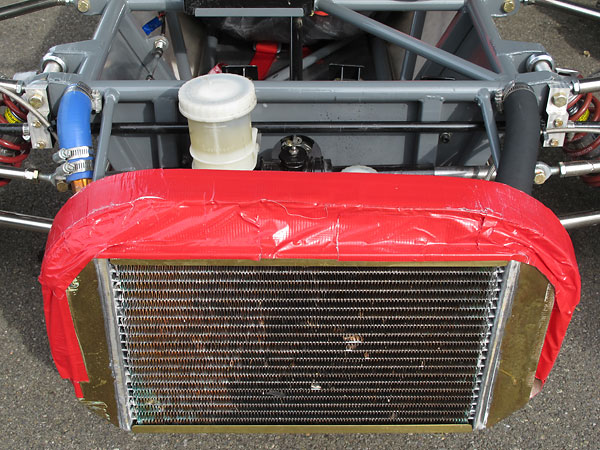
�
Alexis Mk14s came with combined water and oil copper/brass radiators. (Here, the oil cooler isn't in use.)
�
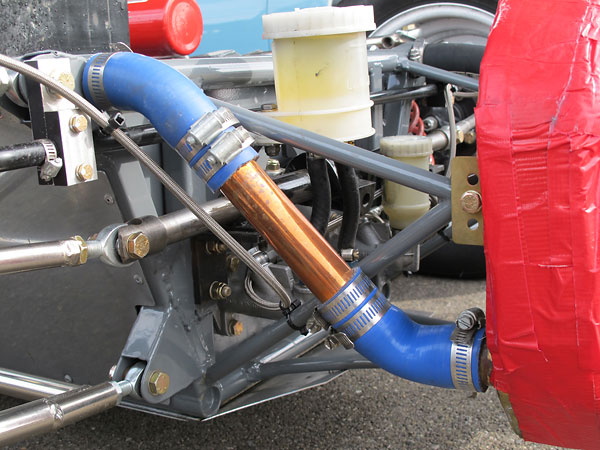
�
Engine coolant is routed through the upper longitudinal frame tubes. Engine oil was
�
originally routed through lower longitudinal frame tubes. However, as explained above
�
this particular car has a replacement frame and the lower tubes are plugged up.
�
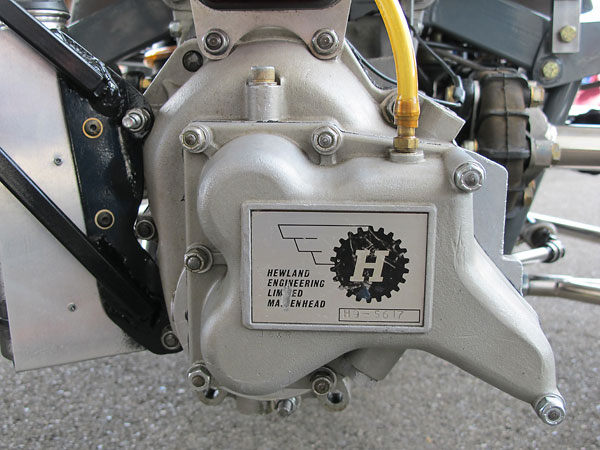
�
Hewland transaxle (H9-5617). The Alexis Mk14 was immediately successful over the Lotus 51.
�
Probably its single biggest advantage was that Alexis used Hewland transaxles from the beginning,
�
whereas the first generation Lotus 51s came with inferior Renault transaxles.
�
�
Front Suspension
��
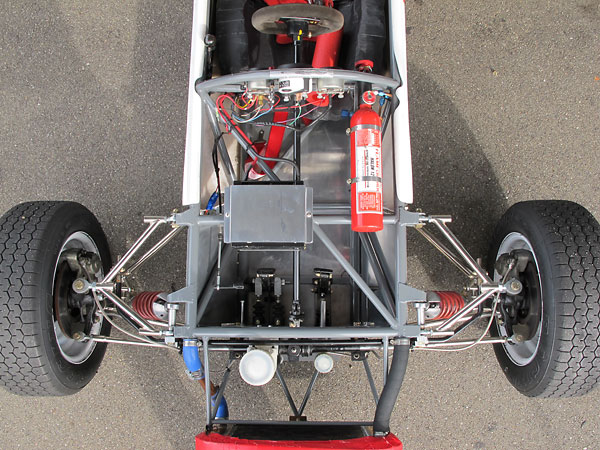
�
Just like Lotus, Alexis sourced steel spaceframes for the Mk14 from Arch Motors. Frames were
�
constructed of 16 SWG mild steel tubes with nickel-bronze joints and with baked enamel paint.
�
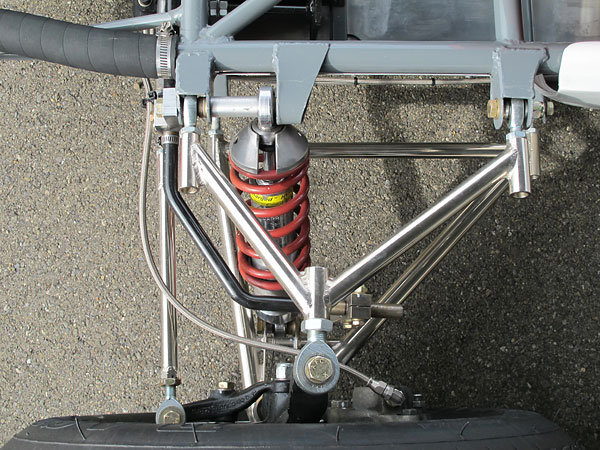
�
Original Russell-Alexis Formula Fords were equipped with Armstrong steel-bodied, single
�
adjustable coilover shock absorbers. (Seen here: modern Carrera "Hyper-Charged" shock absorbers.)
�
Alexis promotional literature pointed out that their suspensions came fully rose-jointed for adjustability.
�
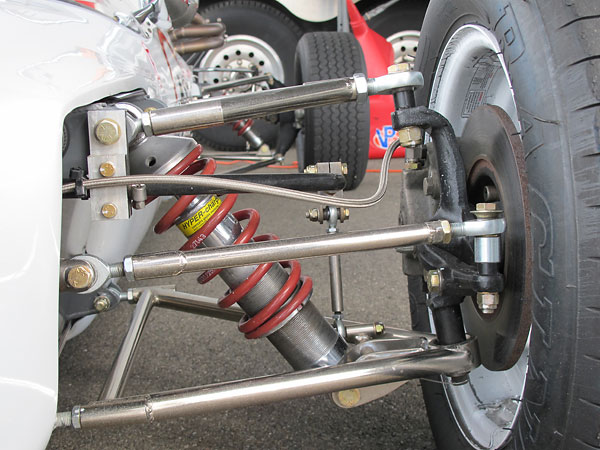
�
Alford & Alder forged steel uprights are nearly ubiquitous on early Formula Fords. (Versions of
�
these uprights had been used on various Standard Triumph cars back to the 1940s.) In this photo
�
we can also see that steel spacers have been inserted both above and below the uprights.
�
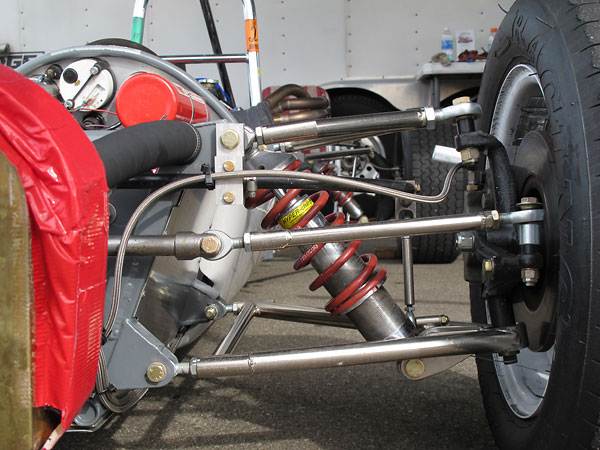
�
Where the steering link connects to the steering arm, we see a cylindrical aluminum spacer.
�
No doubt the thickness of this spacer was carefully selected to minimize bump and roll steer.
�
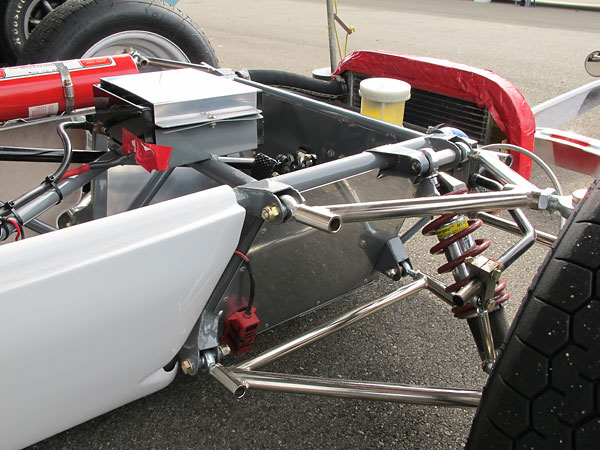
�
Jeff's control arms have been electroless nickle plated. In the late sixties and early seventies
�
it was popular to chrome plate control arms, but then people realized that chrome plating made
�
steel more susceptible to fractures through a chemical process called hydrogen embrittlement.
�
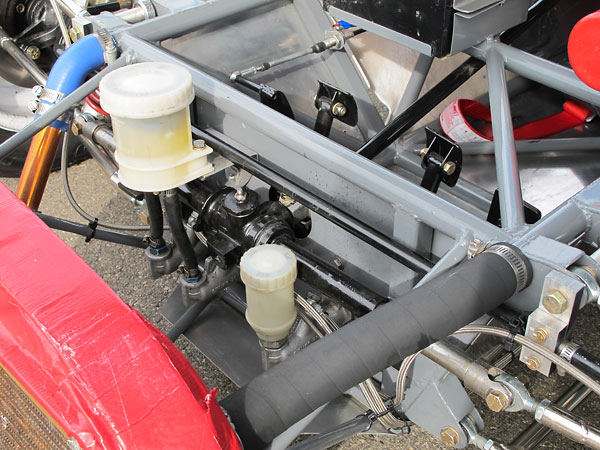
�
Highly modified Triumph Spitfire steering rack.
�
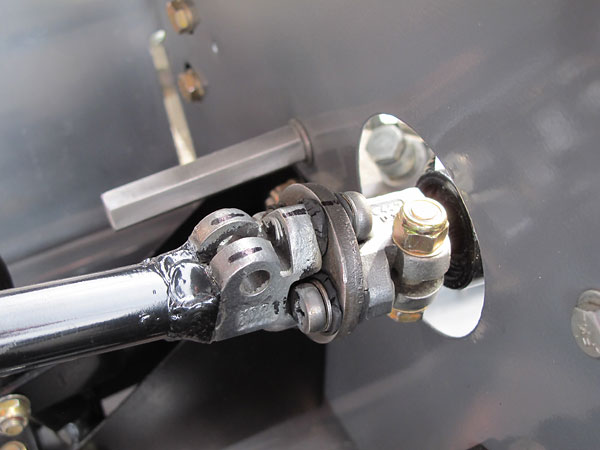
�
Slightly flexible steering coupling, in lieu of a universal joint.
�
�
Rear Suspension
��
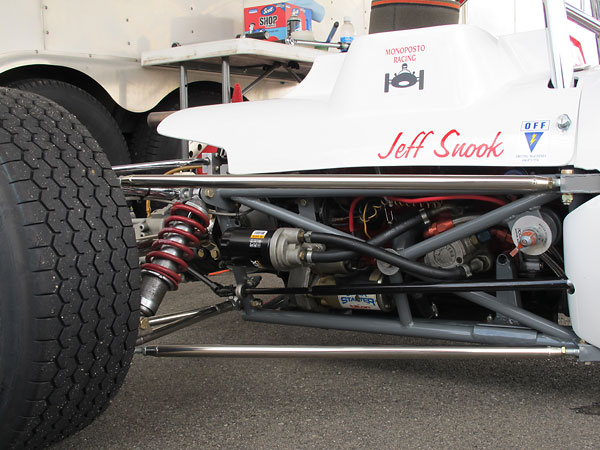
�
Among features and advantages Alexis identified in their early literature: fully rose jointed
�
(i.e. "Heim jointed") suspension and steering components for service and fine adjustment.
�
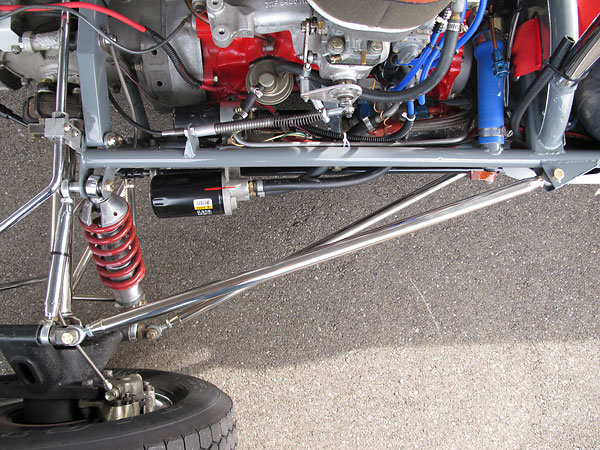
�
One very distinctive design feature of the Alexis Mk8 was its short frame. The spaceframe ended
�
before the driveshafts! Alexis carried this unusual feature over into the Formula Ford era.
�
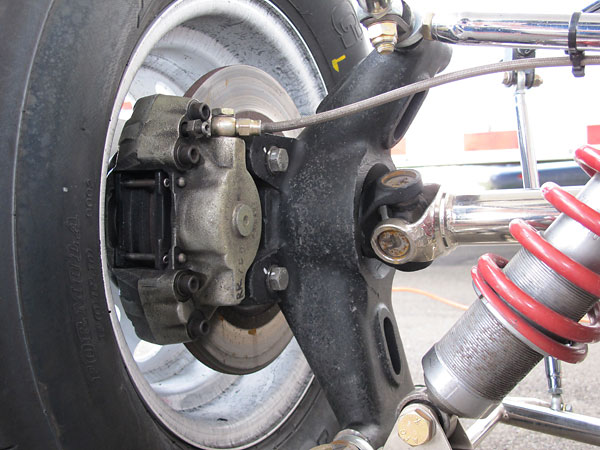
�
Girling 14LF brake calipers squeeze 9" iron rotors. Have you ever wondered why vintage Formula Fords
�
always have iron brake calipers? Aluminum calipers were expressly prohibited to keep costs down.
�
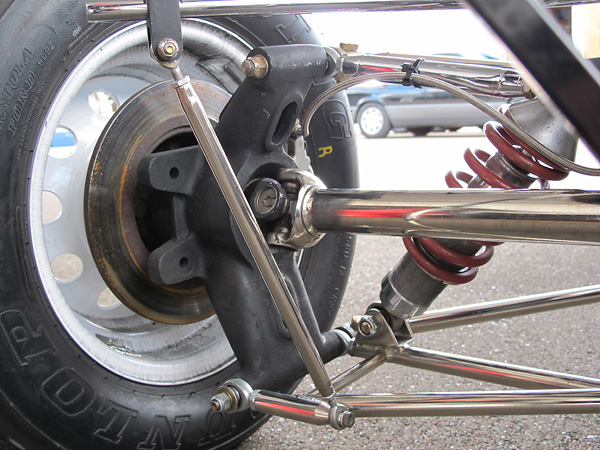
�
Alexis cast magnesium rear uprights (i.e. "hub carriers") are interchangeable from left to right.
�
�
Enjoying this article? www.BritishRaceCar.com is partially funded through generous support from readers like you!
�
To contribute to our operating budget, please click here and follow the instructions.
�
(Suggested contribution is twenty bucks per year. Feel free to give more!)�
Interior
��
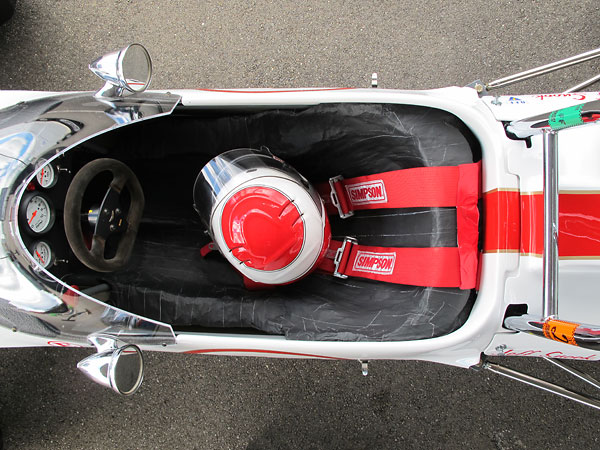
�
Custom molded driver's seat and Simpson 6-point cam-lok safety harness.
�
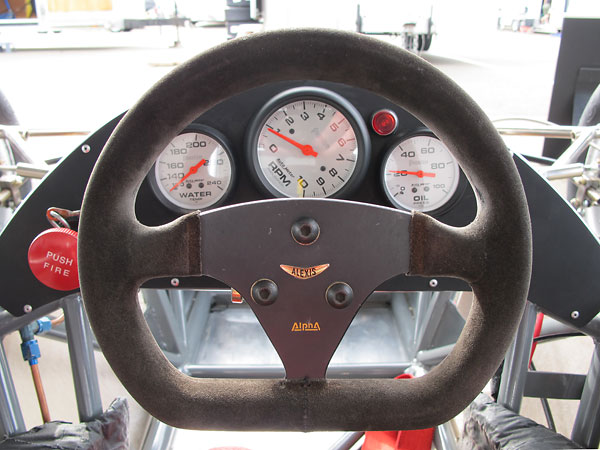
�
AutoMeter "Phantom" coolant temperature gauge, tachometer, and oil pressure gauge.
�
(Original Alexis standard equipment: Smiths versions of the same three basic gauges.)
�
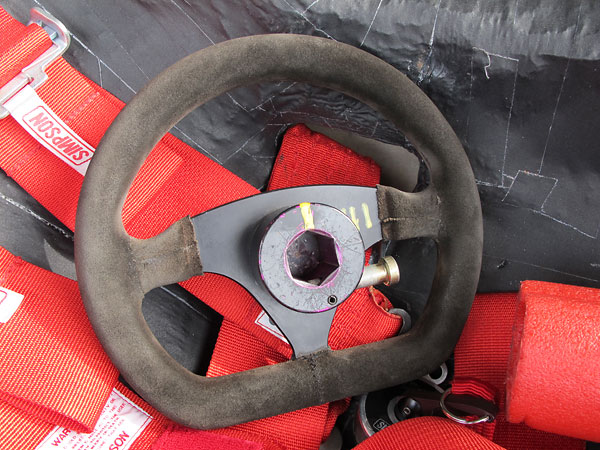
�
Alpha 10" flat-bottom suede-covered steering wheel, mounted on a quick release hub.
�
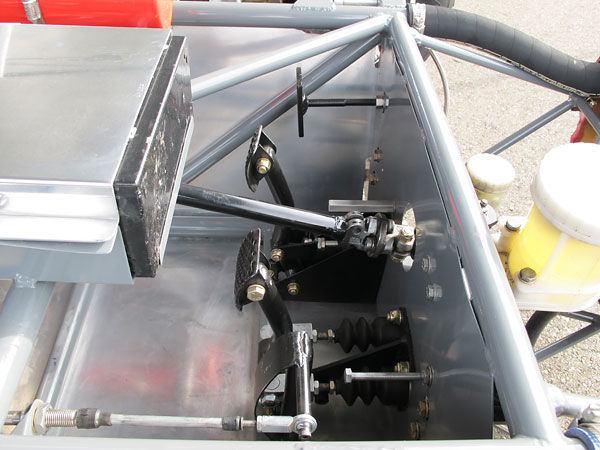
�
The front bulkhead is steel sheetmetal, secured in place with stitch welds.
�
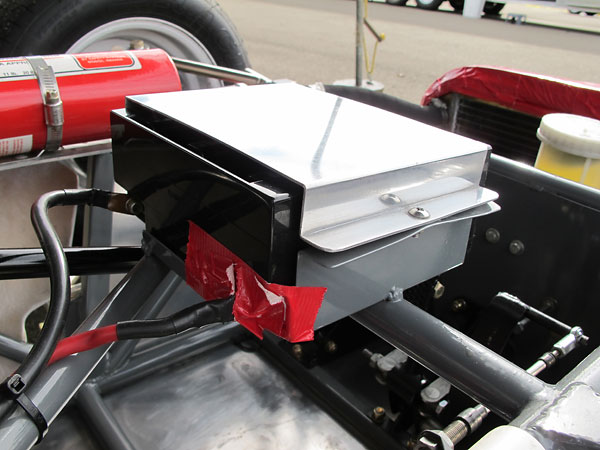
�
Glass Mat Technology sealed racing battery (180cca).
�
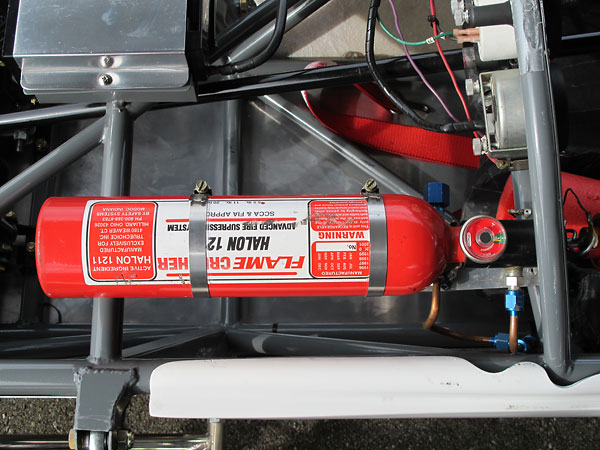
�
FlameCrusher Halon 1211 centralized fire suppression system.
�
�
Exterior
��
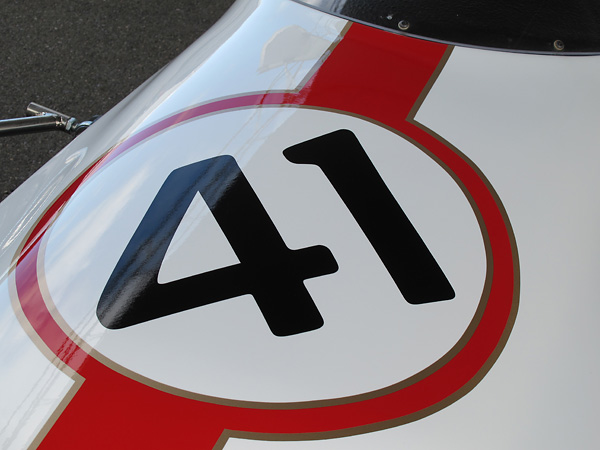
�
Jeff uses number 41 on all of his race cars. There's no special significance to the number.
�
It was simply available with all of the organizations he thought he might race with.
�
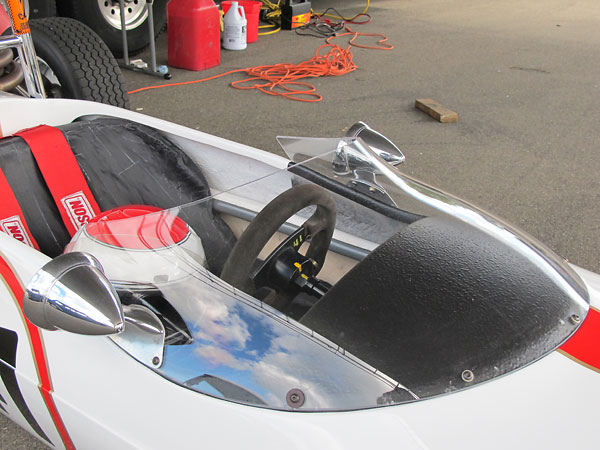
�
The original Russell-Alexis windscreen extended rearward to beyond the drivers shoulders.
�
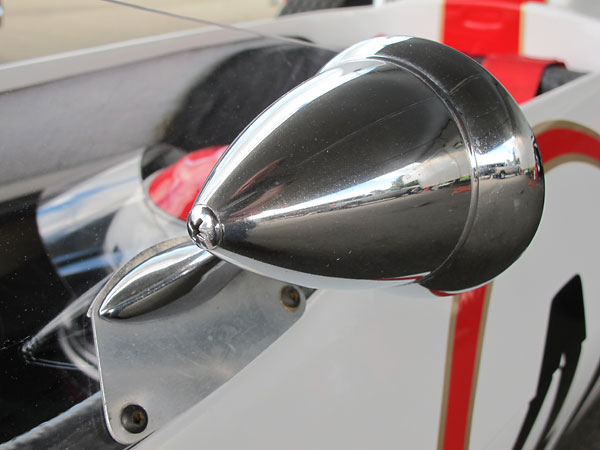
�
Since we photographed Jeff's Alexis, these Talbot race mirrors have been removed
�
and replaced with a pair of white rectangular "F1" mirrors for improved visibility.
�
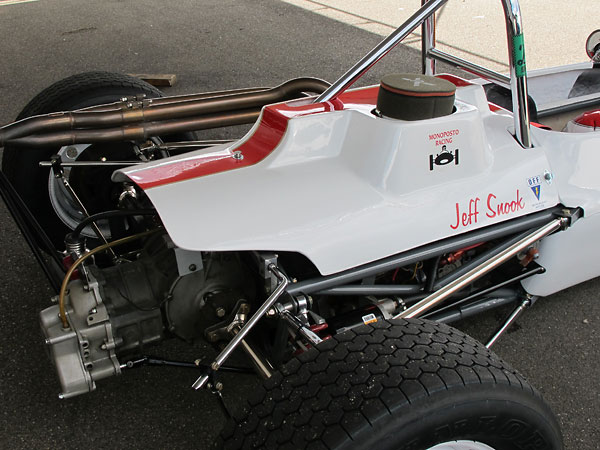
�
Monoposto Racing is a North American Club for vintage open wheeled, single seat race cars.
�
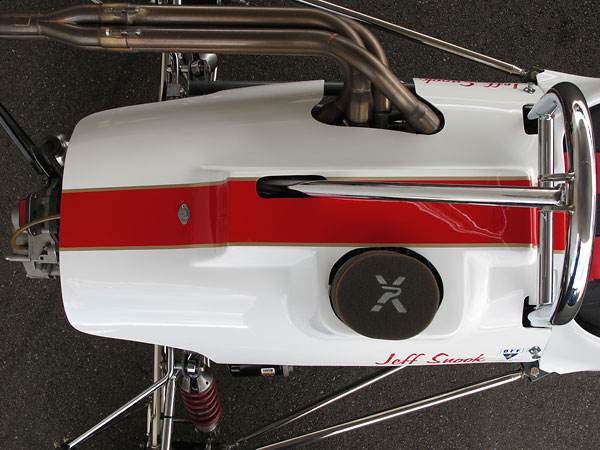
�
The original Russell-Alexis roll hoop was narrower, but it's uncommon to find any currently raced
�
1960s car with an unchanged roll structure because safety expectations have changed so greatly.
�
This is a mandrel bent hoop, and bend radius was probably determined by what mandrel was available.
�
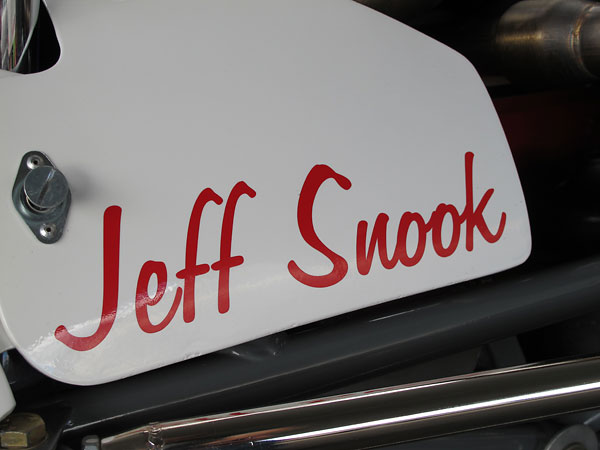
�
Wet track conditions kept speeds down when we saw Jeff race the Alexis at this year's Watkins Glen
�
Vintage Grand Prix. Jeff Snook's best ever Watkins Glen laptime in the Alexis remains 2:14.634.
�
That averages out to 90.9mph around the challenging 3.4 mile circuit.
�
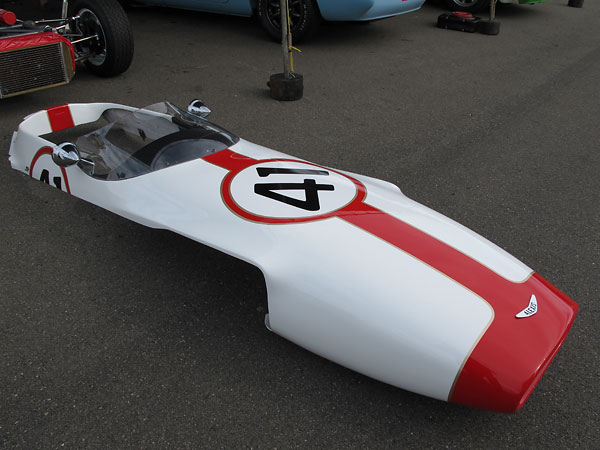
�
Just like Lotus, Alexis originally sourced Mk14 fiberglass body parts from Specialized Mouldings.
�
Ben Beasley of Ohio made the replacement body panels Jeff used for his car's restoration.
�
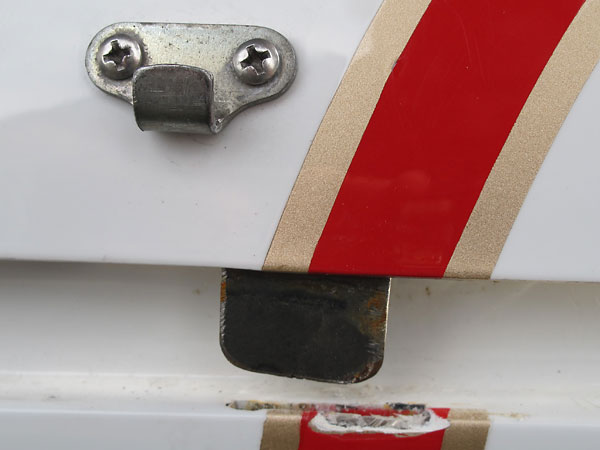
�
Alignment of the nose/cowl section with the belly/sides section is managed by these metal tabs.
�
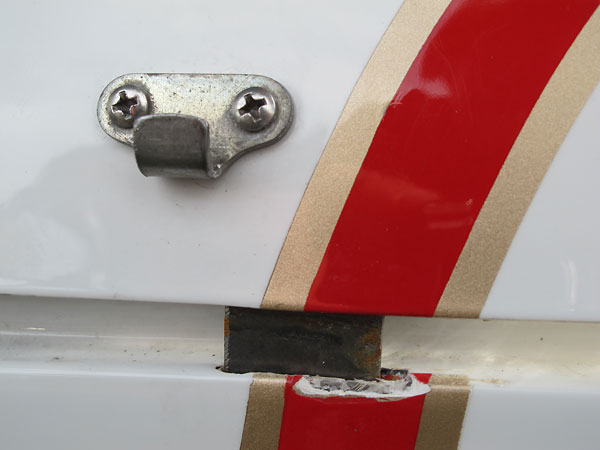
�
(Another view of the tab on the nose/cowl panel being lowered into the slot of the side panel.)
�
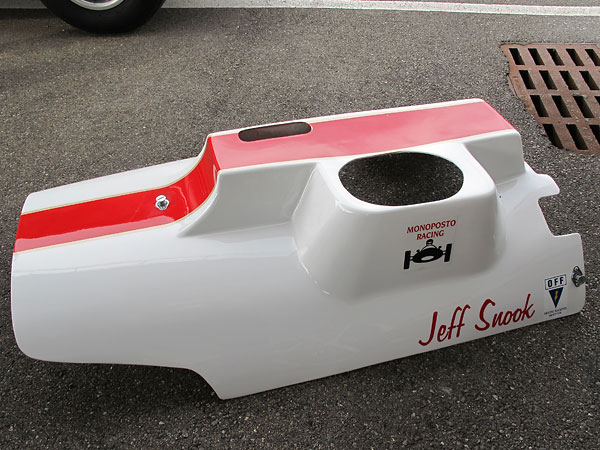
�
Jeff has been unable to find a source for replacement Alexis Mk14 engine covers, so for the
�
time being he's using a Mk15 engine cover made by Ben Beasley. However, Jeff does have an
�
original Alexis Mk14 engine cover, and he plans to make a mold from it at some future time.
�
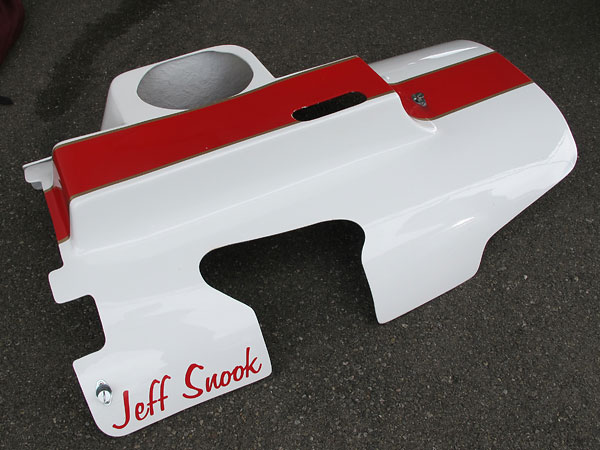
�
This Alexis Mk15 engine cover has been neatly trimmed to fit Jeff's air filter and exhaust headers.
�
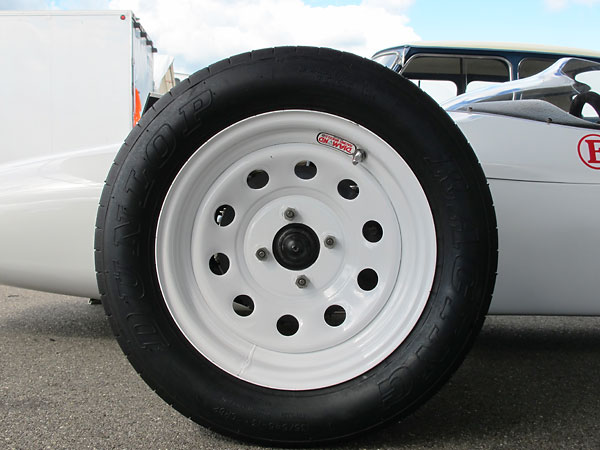
�
Diamond Racing Wheels Inc. 13-inch steel disc wheels, in white powdercoat.
�
(See the weld seam opposite the valve? These are the heavier rolled-rim version.)
�
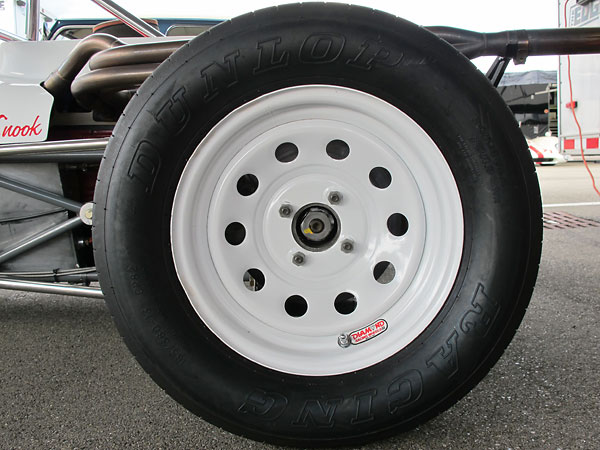
�
Dunlop Racing "Formula Ford" tires (135/545-13 CR82 front, 165/580-13 CR82 rear).
�
| Notes: | |||||||
| (1) | �
Many sources have reported that James Hunt started his racing career in an Alexis Mk15.�
However, the Alexis Mk15 wasn't introduced until after Hunt's first recorded race on�
September 2nd, 1968. Hunt won exactly one race in his Alexis (on September 9, 1968 at Lydden).�
Hunt switched to a Merlyn 11A for 1968 and won exactly one race in the Merlyn on May 5th, 1969.�
Hunt wrecked his Merlyn at the end of May and decided to move up to wrecking Formula Three�
cars. � | ||||||
| (2) | �
Jeff races in Monoposto Racing's "Historic Formula Ford" class. Their rule book states:�
"The minimum weight is: 925 lbs. (including coolant and lubricants, but no driver and�
fuel). Note: This is approximately 5 percent above the original rules. The intent is to�
encourage the use of all safety related items. The use of full height rollbars, with additional�
fore and aft braces, dash hoops and fire systems should not be omitted for fear of a weight�
penalty." Racers typically add ballast to comply with this sort of weight requirement. � | ||||||
�
All photos shown here are from September 2010 when we viewed the car at The US Vintage Grand �
Prix at Watkins Glen. All photos by Curtis Jacobson for BritishRaceCar.com, copyright 2010. �
All rights reserved.
�
| If you liked this article, you'll probably also enjoy these: | �|||||
 | �
Jeff Snook 56 Lotus XI LeMans | �
 | �
Dick Leehr 68 Lotus 51c | �
 | �
Gord Leach 73 Hawke DL11 | �
| You're invited to discuss anything you've seen here on The British Racecar Motorsports Forum! | �|||||
�
Notice: all the articles and almost all the photos on BritishRacecar.com are by Curtis Jacobson.
�
(Photos that aren't by Curtis are explicitly credited.) Reproduction without prior written permission is prohibited.
�
Contact us to purchase images or reproduction permission. Higher resolution images are optionally available.
�

 �
�
